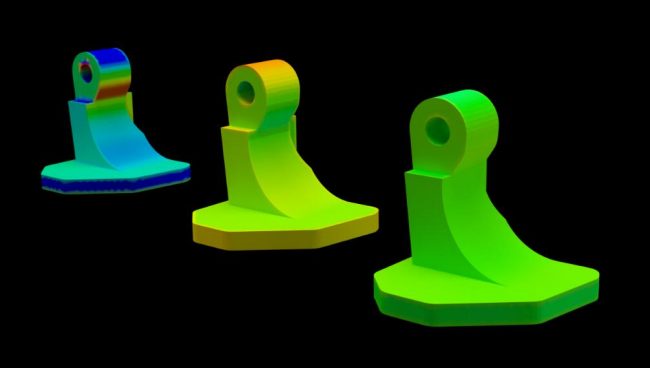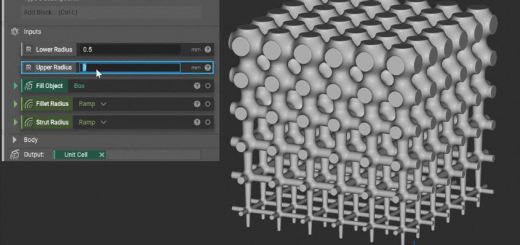Simulation Irons Out Metal Binder Jetting Defects to Enable Mass-Production Additive Manufacturing
Simufact, part of Hexagon’s Manufacturing Intelligence division, has introduced metal binder jetting (MBJ) simulation, enabling manufacturers to predict and prevent the distortion that sintering processes will have on parts at the design stage for the first time. The new simulation tool marks a significant step forward for additive manufacturing because it helps manufacturers achieve the quality they require while exploiting the unique benefits MBJ offers for volume production.
Metal binder jetting is an emerging additive manufacturing technology that has several key advantages over common powder bed fusion processes; high volumes of parts can be printed with minimal spacing; no support structures are needed, and larger lot sizes are possible. It has the potential to replace low-volume, high-cost metal injection moulding for everything from automotive and aircraft parts to medical applications. Because high resolution is possible, it could also reduce the cost and lead times for production of complex and lightweight metallic parts such as gears or turbine wheels.
 MJB ditrotion compensation. Image via Simufact.
MJB ditrotion compensation. Image via Simufact.
However, early adopters can expect a steep learning curve to learn how to achieve the quality they need to exploit these benefits. One key challenge has been predicting changes during the sintering process. A part can shrink as much as 35% and the simple shrinkage models used for other processes cannot predict distortion during the post-build sintering process. Until now, costly physical trials were required to perfect the printing of each part, preventing many manufacturers realising the low cost and flexibility MBJ offers.
The new MBJ tool extends the Simufact Additive software so that manufacturers can predict the shrinkage caused by factors such as the thermal strain, friction and gravity during sintering without specialist simulation knowledge. By compensating for these changes, parts can be 3D Printed as they are designed, and production teams can significantly reduce the proportion of parts that must be scrapped or re-processed. Sintering-induced mechanical stress is also predicted before print, indicating where defects might occur. Manufacturers can use this information to make changes earlier in their product development and reduce the need for costly redesign.
Designed for busy manufacturing professionals, the tool can automate the model setup, preparing the CAD or CAE file for manufacturing simulation and simulations can also be automated through Python scripts. To validate the sintering compensation and increase confidence in quality, the optimised geometry from the MBJ tool can be immediately compared to both the initial design (CAD) geometry and a metrology scan of a manufactured part within user interface.
“We are pleased to introduce the first solution for simulating metal binder jetting sintering process to the market so that manufacturers can take advantage of this important new method. We know customers see metal binder jetting as a pivotal technology for manufacturing, particularly where there’s a need to need to produce intricate parts at high volumes like the automotive industry.
This development was only possible through close collaboration between our manufacturing and printer equipment partners and our highly experienced research & development department,” said Dr. Gabriel McBain, Senior Director Product Management, Simufact & FTI.
Source: Simufact




Recent Comments